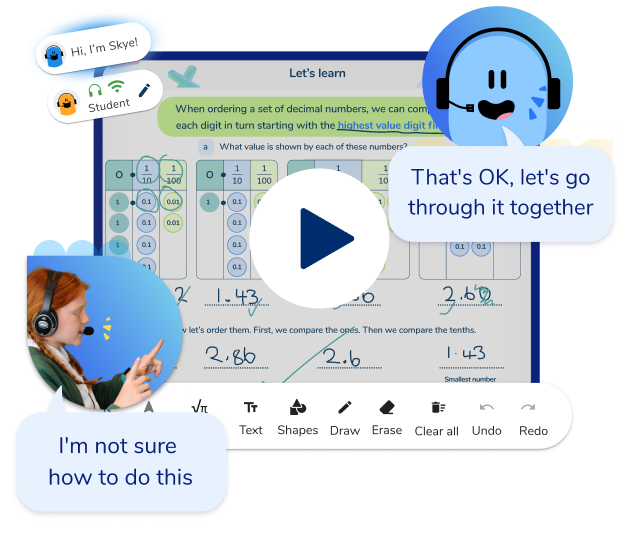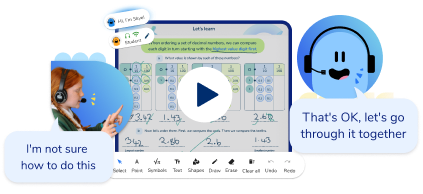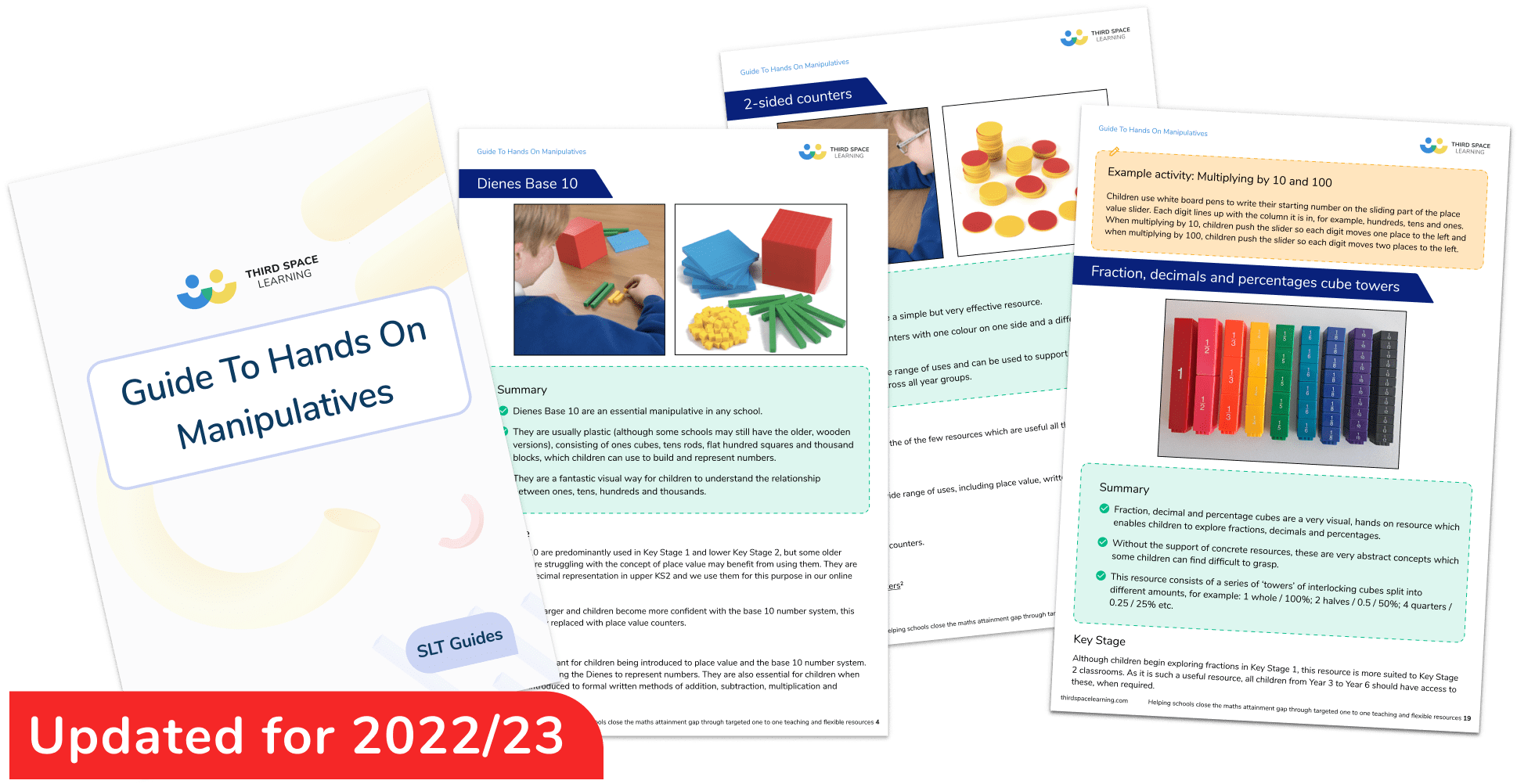What Is A Tens Frame? Explained For Primary School Teachers, Parents & Pupils
Tens frames are becoming a popular teaching tool for use in the primary classroom. Often used in early years to consolidate understanding of numbers to ten, they can also be used further up the school, particularly when thinking about tenths.
In this blog, we will look at what a tens frame is and think about some activities that they can be used for in primary schools.
What is a tens frame?
A tens frame is a grid of two rows and five columns that children can place counters or any other manipulative used for counting on.
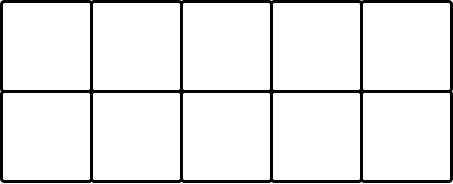
Tens frames are often used for place value activities and number bonds to ten in the EYFS and year one classrooms. They can also be used to help children understand the concept of a tenth in both fractions and decimals which aligns particularly well with the year four curriculum.
Our number system is a base-10 number system which means that we have 10 different numerals (0-9) which can be placed into any place value column and that each position has a value in powers of ten. For this reason, we often break numbers into groups of ten (think the metric systems of measurement).
Guide To Hands On Manipulatives
Download our guide to hands on math manipulatives. Includes 15 concrete resources every KS1 and KS2 classroom should have.
Download Free Now!How does a tens frame work?
A tens frame is used to represent numbers within and up to ten. Children can compose and decompose each number in a variety of ways which helps them develop number sense and to understand different visual representations of numbers.
Usually, tens frames are used with manipulative resources but they can also be used pictorially on a worksheet or using a laminated frame and whiteboard pen or even in a lesson presentation slide.
Read more: Concrete pictorial abstract
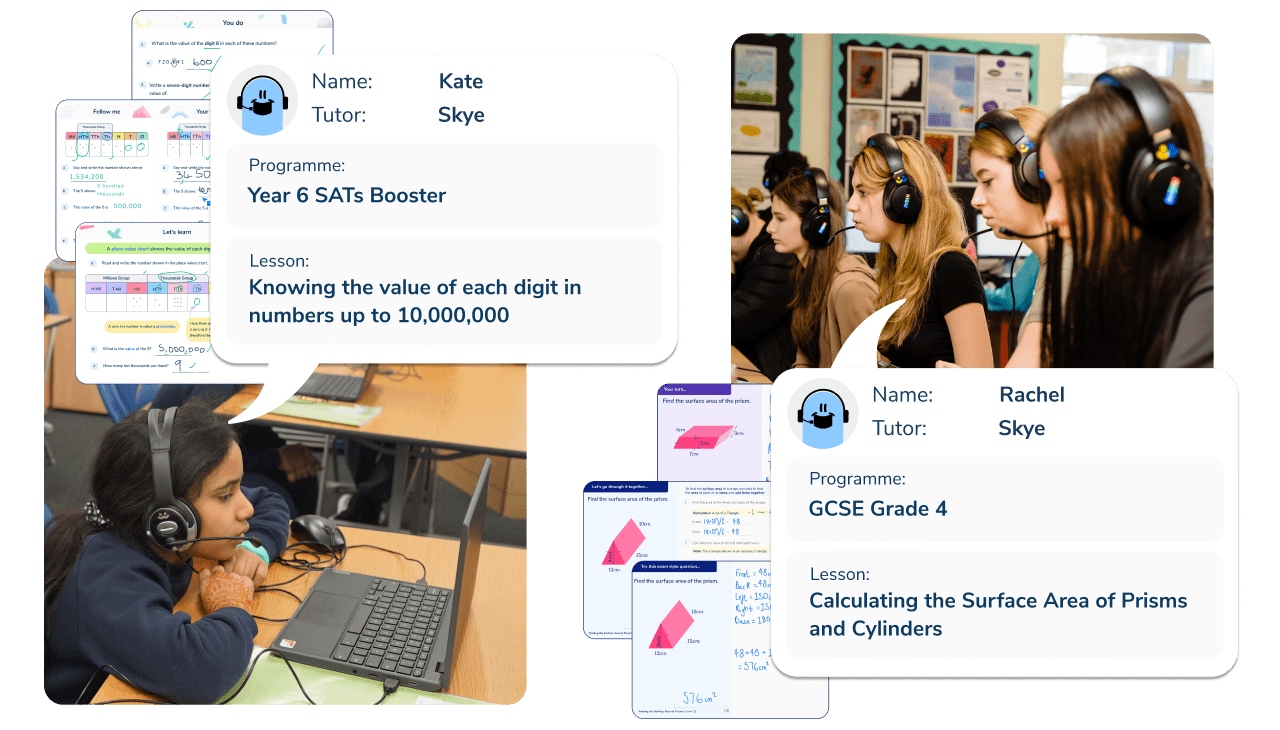
Meet Skye, the voice-based AI tutor making maths success possible for every student.
Built by teachers and maths experts, Skye uses the same pedagogy, curriculum and lesson structure as our traditional tutoring.
But, with more flexibility and a lower cost, schools can scale online maths tutoring to support every student who needs it.
Watch Skye in action7 ideas for using tens frames in the classroom
Tens frames are a useful tool for teaching numeracy concepts in the classroom. Here are some ideas for incorporating them into your lessons:
1. Tens frames and number sense
Teachers in EYFS usually begin their maths curriculum by ensuring that children have a strong understanding of numbers up to 10.
The tens frame can help children to understand both one-to-one correspondence and subitising. A tens frame is an excellent interactive concrete maths resource for the youngest learners as they can manipulate it in a number of ways using a counting tool of their choice to prove their understanding.
For instance, let’s consider the number three. Children can start by counting three counters with one-to-one correspondence and placing them next to each other on the grid:
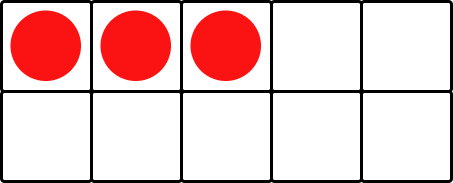
This is an opportunity to model counting to three using one-to-one correspondence visually too. You can then task the children with making three in different ways.
This will show you the understanding they have of numbers. More confident children are likely to be more creative with how they can create three, knowing that as long as there are three counters in the frame, they will always have the correct answer.

The tens frame can also be used to teach subitising.
Instead of asking children to show a given number, show them a number instead and ask how many are there. Through knowing whether they count the answer or not, you can tell if the child is able to subitise that number.
2. Tens frames and place value
Children are often able to read two-digit numbers before they understand them.
By adding a second tens frame, you can support children in early years to begin to understand how numbers to 20 (and beyond visually) are made.
From their previous work, children will already know that one full tens frame is equal to 10. Therefore, when presented with a full tens frame plus a partial one, they can count on from 10 to see what number is there.

This is particularly useful as our numbers 10-20 are ‘teens’ rather than ‘tens’ so it helps the children understand that 16 is a ten and a six.
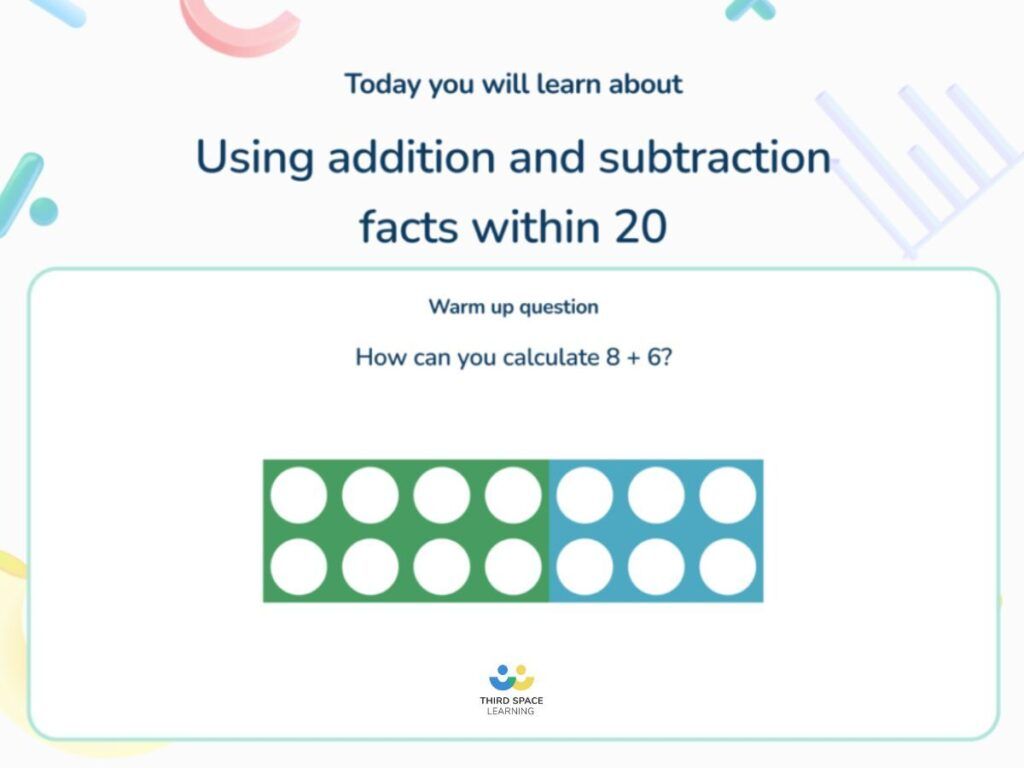
In Year 1 & Year 2, additional complete tens frames can be used to represent larger numbers, although using these with concrete materials requires a lot of resources.
Since our whole number system is base-10, you could also use a tens frame to represent larger numbers using place value counters.
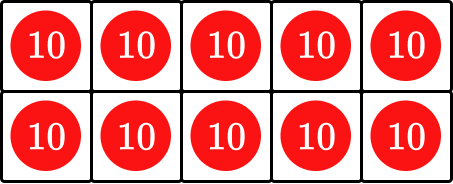
The tens frame above represents 100 because there are ten 10s. This can be repeated no matter how far up the number system you go, the same is possible as our system always works in groups of ten.
3. Tens frames and addition
For addition within ten, a tens frame and two different counting manipulatives is all children need to work out their answer.
For the example, 5+2:
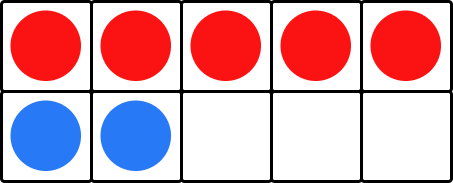
Here, the child has used red counters to represent the 5 and blue counters to represent the 2. When they have placed them into the tens frame, the subitizing that they had already learnt shows them that they have 7 counters in total.
The same is possible with only one coloured counter, but this allows children to see their two
original numbers and how they form the answer.
Tens frame addition activities could be used for numbers above ten using full frame as shown above. However, as mentioned, with larger numbers it would be more effective to use visual tens frames as opposed to many manipulative resources.
4. Tens frames and subtraction
Using a tens frame for subtraction is similar to addition but requires only one set of counting tools and a tens frame.
Children should make their initial number and then physically remove the objects to find their answer.
For example, 9-3:

First, the child has made 9 using their counters in the tens frame. By the time they begin subtraction, it is likely that this is something that they are well practised in and can do with some level of automaticity.
They have then physically taken three out of the tens frame, leaving their answer of 6. Most children will be able to answer six using subitising, however if they need to count every counter using one-to-one correspondence it is all good practice for them to be able to visualise numbers independently.
5. Tens frames and number bonds
Having ten sections, the tens frame is a perfect teaching resource for number bonds.
By choosing two different counting apparatus, they can work out all of the different combinations to completely fill the frame. This is an excellent investigation that children can do to independently find out all of the number bonds to 10.
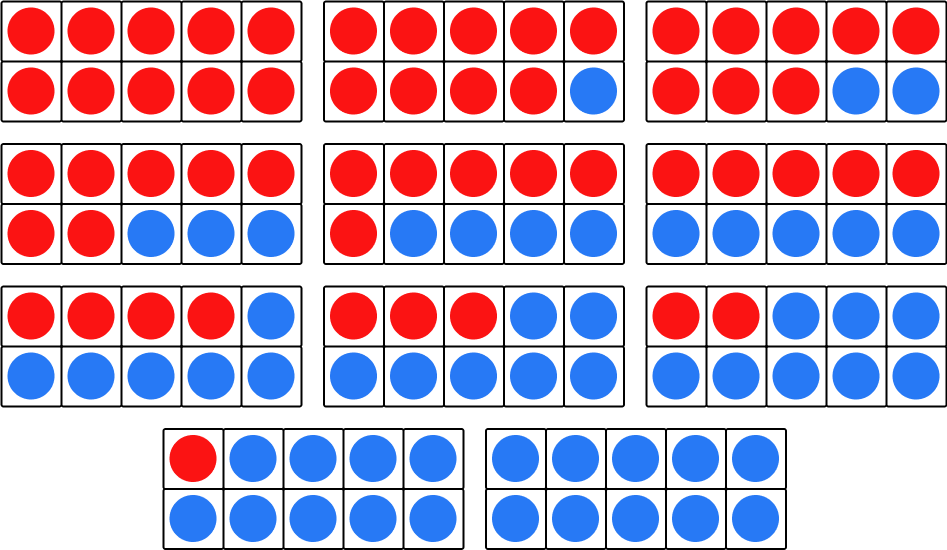
This is a very interesting activity for formative assessment. Asking children to write their outcomes on a whiteboard while working can help identify those who are methodical and confident in their understanding of numbers, as well as those who jump around without much reasoning.
6. Tens frames and fractions
When introducing tenths in year 4, tens frame activities can help children to understand the relationship of tenths to a whole.
Initially, you may begin by filling a number of the sections of the tens frame and simply asking children to represent how much is filled as a fraction:
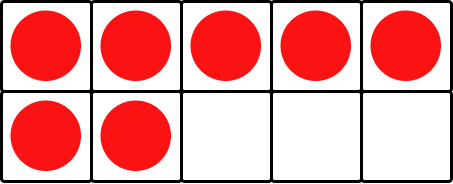
You could then ask how many are unfilled:
There are ten equal parts altogether. Three of the parts are unfilled. The fraction of the tens frame that is unfilled is 3/10.
When children are confident with both, they will recognise that 7/10+3/10=10/10 and that 10/10 is the whole tens frame. They will be able to relate this to their earlier work on fractions to know that 7/10+3/10=1.
A tens frame can also be used to help children to understand improper and mixed number fractions. By using a filled tens frame and a partially filled frame too.

7. Tens frames and decimals
Tens frames can be used in a similar way to above to help teachers introduce decimals and percentages in Year 4 too. If they have been familiar with using the frame to represent tenths in fractions, then it is a small step to them also being able to understand tenths as decimals too.

The children already know from the above example that this shows 7/10.
When they are taught that the first place value column after the decimal point is the tenths column, they will be able to understand that by putting a seven in the tenths column, they will arrive at the decimal equivalent: 0.7.
When do children use tens frames in school?
A five frame or a ten frame is most likely to be used by children in Early Years and Year One as they are mostly useful to represent numbers below 20.
However, they can also be useful when revisiting simple place value once again but with fractions and decimals rather than whole numbers.
How to make your own tens frame
There are many printable blank ten-frame worksheets online and they are as easy as creating a 5×2 box on a word processing device which makes them a really cost-effective manipulative resource when coupled with any counting apparatus you already have.
However, they can be more appealing for children – particularly in an Early Years continuous provision setting – if they are made with items that the children recognise.
These DIY ideas make maths seem more relevant to the real world
- Use an egg-box with ten holes and toy eggs
- Draw a large tens frame outside with playground chalk. You could even use the children as your counters!
- Go on a nature walk and pick up conkers, pine cones and stones to use as your counters.
- Use any small objects such as pasta.
- Use small toys that you already have available in the classroom or even stickers.
Tips for getting started with tens frames in the classroom
Tens frames are a great visual aid for teaching fundamental numeracy concepts in the classroom.
They can help children comprehend number relationships, counting, and place value. If you’re new to using tens frames in your teaching, here are some helpful tips to get you started and make the most of this versatile and effective resource:
- Introduce tens frames early in the children’s school life. They will be able to use them more confidently if they are familiar with them.
- Choose an inexpensive way to create tens frames in the classroom – such as printable – so they can begin to be used immediately rather than having to wait for a delivery.
- Make maths fun by going outside to work with your tens frames.
Tens frames worked examples
Tens frames are a useful visual aid for teaching numeracy concepts, enabling children to gain a thorough understanding of number relationships, counting, and place value. Here are a few examples:
- Show the number 5 in three different ways on your tens frame.

The child has shown three different representations of 5. There are many different ways that this could be shown.
- Ali has 6 sweets, he gave 2 to his friend. How many sweets does he have left?

The child has begun with six counters on their tens frame, they have then physically removed two to leave an answer of 4.
- What fraction of the tens frame is filled? What fraction is unfilled? How do you know?
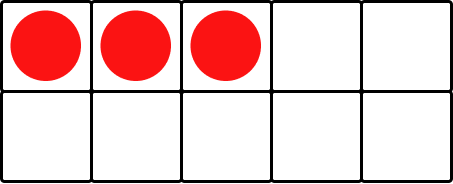
3/10 of the tens frame is filled because there are 10 equal parts and three of those are filled. 7/10 are unfilled because 1 whole – 3/10 = 7/10.
Tens frames practice questions
These tens frames questions are designed to challenge students at different skill levels and can be adapted to suit a variety of teaching styles.
- Show the number 9 in three different ways on the tens frame.
Answer: any combination that leaves one square on the tens frame empty.
- Sally has 4 pencils and Jo has 3 pencils. How many pencils do they have altogether?
Answer: 4+3=7
- What number sentences does this tens frame show?
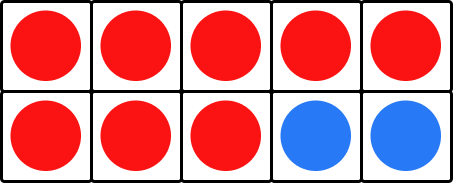
Answer: 8 + 2 = 10, 2 + 8 = 10 children might also be able to explain how it shows 10 – 8 = 2 and 10 – 2 = 8.
- What improper fraction and mixed number is shown here?

Answer: 15/10 (or 3/2) which is equal to 1 5/10 (or 1 ½)
- Express how much of the tens frame is filled as a decimal:
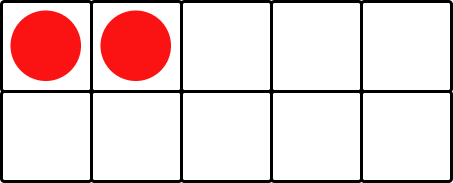
Answer: 0.2
A tens frame is the name for a 5×2 table used to represent numbers up to 10.
It is called a tens frame because there are ten sections.
Tens frames help the youngest learners to develop a secure number sense as well as supporting understanding simple addition and subtraction, fractions and decimals.
We usually use a tens frame horizontally. However, there is no reason they could not be used vertically.
Wondering about how to explain other key maths vocabulary to your children? Check out our Primary Maths Dictionary, or try these:
DO YOU HAVE STUDENTS WHO NEED MORE SUPPORT IN MATHS?
Skye – our AI maths tutor built by teachers – gives students personalised one-to-one lessons that address learning gaps and build confidence.
Since 2013 we’ve taught over 2 million hours of maths lessons to more than 170,000 students to help them become fluent, able mathematicians.
Explore our AI maths tutoring or find out about an online maths tutor for your school.
